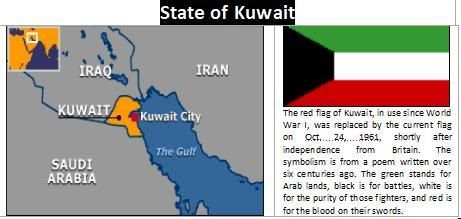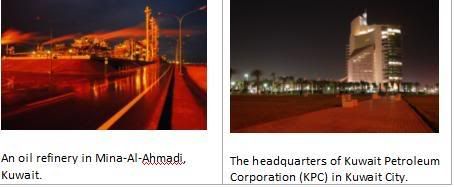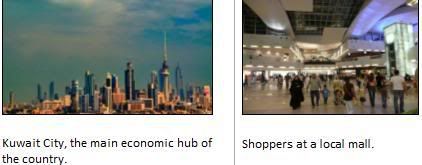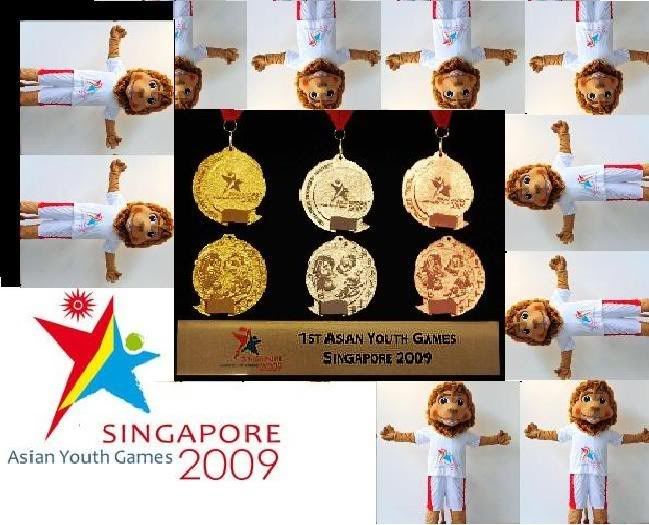|
:Sports N Recr8n:
|
Monday, June 22, 2009With the coming Asian Youth Games and Youth Olympic Games, our school is proud to present one of the participating countries, State of Kuwait. Kuwait’s Country Profile OFFICIAL NAME:State of Kuwait GeographyArea: 17,820 sq. km.; approximately the size of the State of New Jersey. Cities: Capital - Kuwait City. Terrain: Almost entirely flat desert plain (highest elevation point - 306 m). Climate: Summers are intensely hot and dry with average highs ranging from 42o-49oC (108o-120oF); winters are short (Dec - Feb) and cool, averaging 10o-30oC (50o-80oF), with limited rain. People Nationality: Noun and adjective - Kuwaiti(s). Population: (June 2008 est.): 3,399,637 including approximately 1.05 million Kuwaiti citizens and 2.34 million non-Kuwaiti nationals. Annual growth rate (2008 est.): 3.591%. Ethnic groups: Kuwaiti 45%, other Arab 35%, South Asian 9%, Iranian 4%, other 7%. Religion: Muslim estimated 85% (Sunni 70%, Shi'a 30% among Kuwaitis), with sizable Hindu, Christian, Buddhist, and Sikh communities. Languages: Arabic (official), English is widely spoken. Education: Compulsory from ages 6-14; free at all levels for Kuwaitis, including higher education. Adult literacy (age 15 and over) - 93.3% for the total population (male 94.4%, female 91%) (2005 census). Health: Infant mortality rate (2008 est.) - 9.22 deaths/1,000 live births. Life expectancy (2008 est.) - 76.38 yrs. male, 78.73 yrs. female. Work force: (2007 est.): 2.093 million (76% male; 24% female; 20% Kuwaiti citizens). Geography: Kuwait is a small country situated on the Arabian Peninsula in Southwest Asia, nestling at the top of the Gulf, flanked by large or powerful neighbours - Saudi Arabia to the south, Iraq to the north and Iran to the east. To the north, south and west, Kuwait shares its borders with Iraq and Saudi Arabia. The east however, is all water as the country borders the Persian Gulf. Kuwait's Islands. There are nine islands off the coast of Kuwait: Failaka, Bubiyan, Miskan, Warba, Auhha, Umm Al-Maradim, Umm Al-Naml, Kubbar and Qaruh. Bubiyan: Located in the north-east of the Arabian Gulf, it is the largest island in area (863 km2) and is linked to the mainland by a metal concrete bridge. Bubiyan is the largest island (863 kilometres). It is connected to the mainland by an iron bridge and lies to the North-west of the Gulf. Warba: Located at the north extremity of the Gulf, it occupies an area of 37 km2. Miskan: It lies to the north of Failaka island. Auhha: It lies to the south of Failaka island. Umm Al-Nami: It is located in the south of Kuwait bay. Many Islamic antiquities were found there. Kubbar, Qaruh,Umm al-Maradim: They lie at the southern side of the Gulf. Large flocks of sea-birds used to live there, but regular visits to the island by people fond of shooting and swimming have caused a significant decrease in their number. Economy: Kuwait’s economy is largely oil-based. Kuwait, the world’s 11th-largest oil producer, sits on more than 100 billion barrels of oil reserves, or 8 percent of the world’s total. Crude oil accounts for about 93 percent of Kuwait’s total exports.  The People: Ethnic Groups, Religion, Language. The Kuwaitis are Muslims. Arabic is the language of the country, although English is widely spoken. Traditionally, less than half the population were Kuwaiti citizens. The rest were immigrant workers and their descendants. Palestinian Arabs long made up the largest group of foreign workers. Others came from various parts of the Middle East. Thousands of Europeans and Americans were also employed by the oil companies. Way of Life: Most of the old town of Kuwait was replaced by Kuwait city—a modern capital with wide boulevards, a variety of shops, banks, luxury hotels, and the most up-to-date urban services.  Culture: Being a highly cosmopolitan society, Kuwait has a diverse and vibrant culture. The influence of Islamic and Arab culture on its architecture, music, attire, cuisine and lifestyle is prominent as well. The most distinctive characteristic of local Kuwaiti culture are the diwaniyas, a large reception room used for social gatherings attended mostly by close family members. While the Islamic dress code is not compulsory, unlike neighbouring Saudi Arabia, many Kuwaiti men prefer wearing thawb, an ankle-length white shirt woven from wool or cotton while some women wear abaya, black over-garment covering most parts of the body. This attire is particularly well-suited for Kuwait's hot and dry climate. Western-style clothing is also fairly popular, especially among Kuwait's youth. Seafood has been the mainstay of the Kuwaiti diet for centuries. The Arabs in the Persian Gulf region played a crucial role in the spice trade between India and Europe and spices have remained an important ingredient of Kuwaiti cuisine. Traditional Kuwaiti cuisine includes Machboos or Kabsa>\ which borrows heavily from South Asian cuisine. Climate: Due to the location of Kuwait in the Sahara geographical region, the weather of the country is characterized by long, hot and dry summers, short warm and sometimes rainy winters. Dust storms almost occur with a rise in humidity during summer. The highest temperature ever recorded was 51oC in July 1978, whilst the lowest 6oC was recorded in January 1964. There is a wide variation of temperature, ranging from an average of 45oC in summer to an average of 8oC in winter. Such climate fluctuation is often accompanied by a change in the annual rainfall: one year the annual rainfall may be 22mm and then quite unpredictably it will raise to 352 mm the next. Kuwait’s Olympic History: First time represented at Summer Olympics: 1968 Gold medals won: 0 Silver: 0 Bronze: 1 Athletes at the Beijing Olympics: 8 Number of Sports competing in at Beijing Olympics: 5 Medals at 2008 Beijing Olympics: 0 Websites: http://en.wikipedia.org/wiki/Kuwait http://kuwait-embassy.or.jp/english/envi/main.html http://www.state.gov/r/pa/ei/bgn/35876.htm https://www.cia.gov/library/publications/the-world-factbook/geos/ku.html http://middleeast.about.com/od/kuwait/a/me080804f.htm http://middleeast.about.com/od/countriesmz/p/me071209e.htm http://www.photius.com/countries/kuwait/climate/kuwait_climate_climate.html http://www.geographic.org/flags/new2/kuwait_flags.html SRC froze in time on 10:58 PM
|
_______________ MProfile .......... We are a group of students currently in the SRC'2009. We are fun and crazy :D Do not spam on the tagboard. No vulgars. Do not post any thing related to sexual reference in the tagboard. Use your own names in the tagboard Links .......... Blogger Blogskins StockStash _______________ Tagboard designed by: dreamwalker |
